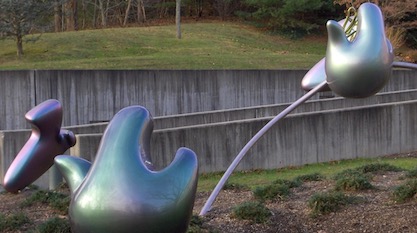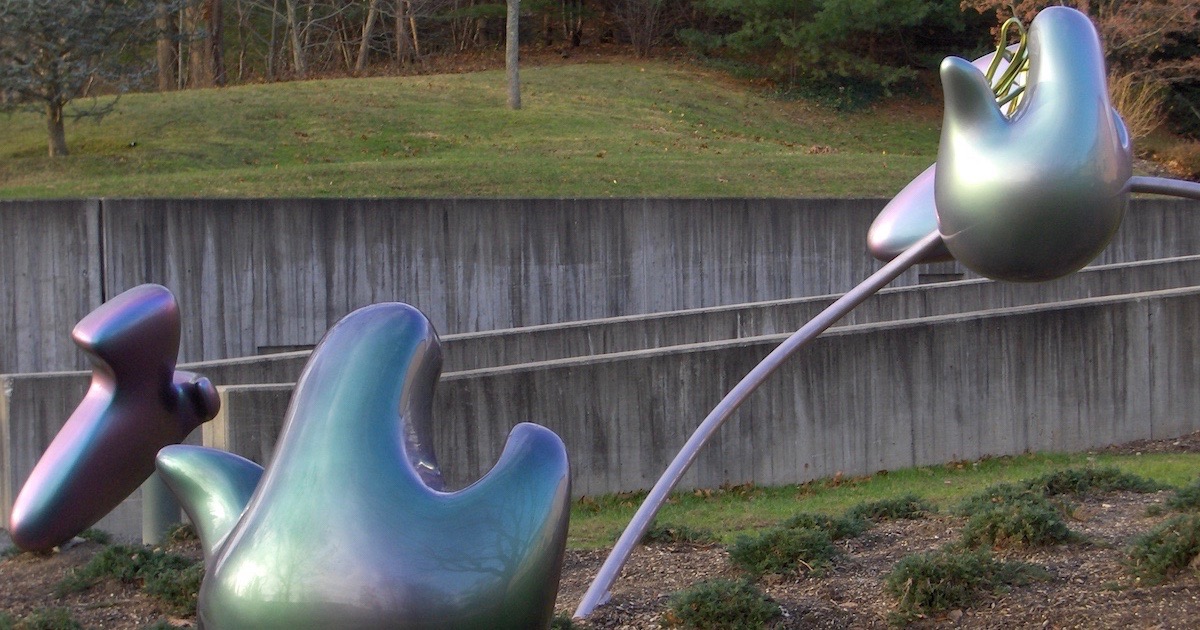 Intelligent Design
Intelligent Design
Protein Folds Violate Evolutionary Expectations


A standard view of globular proteins is that they collapse into a “native fold” that must be achieved to function properly. Some loose ends on the exterior might move a bit, but the central part is fixed. That view is changing. Some “intrinsically disordered” proteins are known that never collapse into a stable fold, and yet have functions. Now, two scientists from Howard Hughes Medical Institute have counted a non-trivial number of other proteins that can switch between two stable folds. The paper by Porter and Looger in the Proceedings of the National Academy of Sciences explains:
It is commonly thought that each globular protein has a single 3D structure, or fold, that fosters its function. In contrast, recent studies have identified several fold-switching proteins whose secondary structures can be remodeled in response to cellular stimuli. Although thought to be rare, we found 96 literature-validated fold-switching proteins by exhaustively searching the database of protein structures [Protein Data Bank (PDB)]. Characterizing these proteins led us to hypothesize that their abundance may be underrepresented in the PDB. Thus, we developed a computational method that identifies fold-switching proteins and used it to estimate that 0.5–4% of PDB proteins switch folds. These results suggest that proteins switch folds with significant frequency, which has implications for cell biology, genomics, and human health. [Emphasis added.]
This also has implications for evolution. At first glance, it might appear that exploring additional folds allows a protein to evolve new functions. That’s what Porter and Looger thought, until they made some predictions and looked at the data.
To probe how widespread fold switching might be, we first looked at its organismal distribution. If it were difficult for fold-switching proteins to evolve, then evolutionary theory would predict that fold switching would be observed more frequently in viruses and bacteria than in eukaryotes, because of the selective pressure to evolve quickly and maintain a compact genome, both of which favor multifunctional (and possibly multiconformational) proteins. In contrast, eukaryotes are not under the same stringent genomic size constraints, making it easier for a gene to be copied and evolved to perform a function different from the original [subfunctionalization]. The calculated distribution is not consistent with this expectation.
Their results were actually opposite the evolutionary expectation. Fold switching was found as frequently in humans as it is in viruses, and less frequently in bacteria. The assumed “selective pressure” for compact genomes, therefore, failed to materialize. Instead, these dual-fold proteins look designed.
Thus, we hypothesized that a substantial number of amino acid sequences can adopt two or more stably folded conformations (i.e., different configurations of regular secondary structure, not disorder ↔ order transitions). Consistent with this hypothesis, several proteins with ≥80% sequence identity but different folds have been engineered successfully.
If engineers can do it, maybe the natural proteins show evidence of engineering for this feature, too. The idea is like those robot toys that can be refolded into one or more shapes, or one of those compact multi-tools that can operate as a pliers or screwdriver, depending on how you fold it. The authors give a couple of examples of why this capability could be beneficial to the cell. Think how cool this is:
What advantages might fold switching confer to biological systems? Some fold-switching proteins have two disparate functions. This bifunctionality allows synergistic biological activities to be coupled quickly while obviating the need for additional cellular resources to transcribe and translate two proteins with different functions. One obvious example is RfaH, which functions as both a transcription factor and a translation factor. A less obvious example is human CLIC1, which can function as both a soluble glutathione reductase and a membrane-inserted chloride ion channel. CLIC1’s glutathione reductase activity suggests that its function might be modulated by changes in redox potential. Indeed, it inserts into lipid bilayers and functions as a chloride channel under oxidizing, but not reducing, conditions.
A second possible advantage of fold switching is stricter regulation. While many globular proteins can populate both active and inactive conformations under many sets of biologically relevant conditions, fold-switching proteins can be locked in an active or inactive state until a specific cellular trigger is present. One example is human mitochondrial HSP90N, which is proposed to exist in an autoinhibited state until it binds ATP and refolds. This would permit HSP90N to be present in the cell without being active. Thus, bifunctionality and tighter regulation might explain why eukaryotic proteins switch folds more frequently than genomic size constraints would predict.
Porter and Looger never revisit the subject of evolution. Although they don’t admit it outright, they found more functionality in the same amino acid sequence coded for by the same gene. In a word, they found more evidence of intelligent engineering. Design advocates can stand in awe of more design packed into the same compact space than previously imagined!
Folding While Building
Another paper on protein folds appeared recently in the AAAS open-access journal Science Advances. Samelson et al. wondered how much of the folding gets done as the polypeptide is emerging from the ribosome, where translation occurs. This is called co-translational folding. Does it have a purpose? Does it cut down on the possibility of misfolding?
Precise protein folding is essential for the survival of all cells, and protein misfolding causes a number of diseases that lack effective therapies, yet the general principles governing protein folding in the cell remain poorly understood. In vivo, folding can begin cotranslationally and protein quality control at the ribosome is essential for cellular proteostasis. We directly characterize and compare the refolding and cotranslational folding trajectories of the protein HaloTag. We introduce new techniques for both measuring folding kinetics and detecting the conformations of partially folded intermediates during translation in real time. We find that, although translation does not affect the rate-limiting step of HaloTag folding, a key aggregation-prone intermediate observed during in vitro refolding experiments is no longer detectable. This rerouting of the folding pathway increases HaloTag’s folding efficiency and may serve as a general chaperone-independent mechanism of quality control by the ribosome.
Chaperones are molecular machines that help large, complex proteins achieve their native fold. Many polypeptides do not need chaperones to fold, but they are subject to misfolding as they emerge from the ribosome. In a lab dish, the HaloTag protein studied here is subject to collapsing into a useless aggregate instead of properly folded, functional machine. Since that doesn’t happen in a live cell, something must be preventing it. That something is a “rerouting of the folding pathway” that ensures quality control and folding efficiency. Do the authors speculate on how such a clever mechanism might have evolved? Cue the crickets. Rather, they were happy just to “systematically investigate how the translational and quality control machinery modulates protein folding.”
Silly Solutions
If you read evolutionary theories about proteins, you often find glittering generalities, unrealistic models, and admissions of ignorance. This article at Phys.org, for example, “How to code a functional molecular machine,” presents cartoony diagrams of Lego-like building blocks held together by springs that might rearrange themselves into different shapes.
During evolution, flexible amino acids are added, some useful, some not. Over time, a “floppy” region forms at the center of the molecule making the protein more flexible to bend and bind to the ligand. The model estimated that an efficient solution is reached after a thousand mutations.
Doug Axe has shown, however, that you cannot wait for even six or seven mutations to act as positive stepping stones toward a new function in the entire age of the universe — let alone a thousand! Look at this incredible juxtaposition of bluffing assertions about evolution, plagiarizing the language of design, followed by admissions of ignorance:
Evolution has shaped the living world we see around us for billions of years. Zillions of proteins work harmoniously to keep these life processes going. They are responsible for the smooth functioning of any organism: they recognize other molecules (ligands), bind to them and convert them. Others have transport function, provide structure, and support to the cells. Genes store the information about the production and design of these molecular machines. However, despite decades of research, drafting the “map” that draws the path from genes to protein function is not trivial.
Their model of coding for functional proteins is as flawed as Dawkins’s old Weasel method. They think they can swap out one amino acid at a time and Darwin’s natural selection will wait around till a working protein arrives by chance:
The model mimics evolution by changing one random amino acid at a time. During evolution, the zeros and ones in the gene are randomly flipped through a process called mutation. Most mutations do not bring any difference, or lead to non-functional proteins, but some rare mutations can give rise to a more efficient protein. Essentially, both functional and non-functional proteins are produced during evolution, but according to Darwin’s theory of “survival of the fittest”, only the functional proteins are kept and the non-functional proteins eventually die out.
We know, instead, that (1) non-functional proteins are more likely to be eliminated by the cell than to wait around, and (2) the probability of finding function in random sequence space is so low, it will never happen in multiple universes. It’s silly to trust in sheer dumb luck like that.
Conclusions
Intelligent design predicts that cells will look more designed as the resolution increases. Evolution predicts more randomness, more chaos, and more junk. Here we have seen two more strong evidences of engineering design and quality control in proteins that were not previously well understood. The evidence in the first two papers comes out of observation of real-world proteins. The evolutionary offering is an imprecise, unrealistic cartoon model that violates probability laws and reason. The verdict?
Photo: “Waltz of the Polypeptides” (sculpture), Cold Spring Harbor, by Vik Nanda, via Flickr.
